- Wet Filament: Prevention, Symptoms & Drying - July 18, 2024
- Sovol SV08 – Best PrusaSlicer Settings & Profile - June 26, 2024
- Sovol SV08 – Best Orca Slicer Settings & Profile - June 26, 2024
Disclosure: Links marked with * are Affiliate Links. I earn from qualifying purchases if you decide to make a purchase through these links – at no additional cost for you!
Among the various 3D printing technologies, Fused Deposition Modeling (FDM) and Stereolithography (SLA) stand out for their unique processes and applications – especially for private use.
FDM builds objects layer by layer from melted plastic, making it popular for hobbyists and practical parts. SLA, on the other hand, uses a laser to harden liquid resin into precise, detailed objects, favored in industries requiring high detail like dentistry and jewelry or for highly detailed models for hobbyists.
Key Takeaways:
- Opt for FDM if you’re looking for a cost-effective, easy-to-use option for creating durable, functional parts.
- Choose Resin if your priority lies in achieving high detail and smooth finishes for intricate designs, and you’re prepared for the additional cost and post-processing work.
Table of Contents:
Comparison Table FDM vs. Resin 3D Printing
| Feature | Filament (FDM) | Resin (SLA/DLP/LCD) |
|---|---|---|
| Cost | Lower initial and material costs | Higher initial and material costs |
| Detail | Good for larger parts, visible layer lines | Excellent for fine details and smooth surfaces |
| Application | Functional parts, prototypes, household items | Detailed models, jewelry, dental, intricate art |
| Ease of Use | More straightforward, minimal post-processing | Complex post-processing, careful material handling |
| Safety | Less hazardous materials, easier to manage | Requires good ventilation, protective gear for handling |
| Space | Larger printers, less space for post-processing | Smaller printers, more space needed for post-processing |
| Material Cost | Generally cheaper filaments | More expensive resins |
| Strength | Durable, strong parts | Brittle, more for aesthetic/detail |
| Maintenance | Easier maintenance | Requires more meticulous maintenance |
How 3D Printing with Filament Works
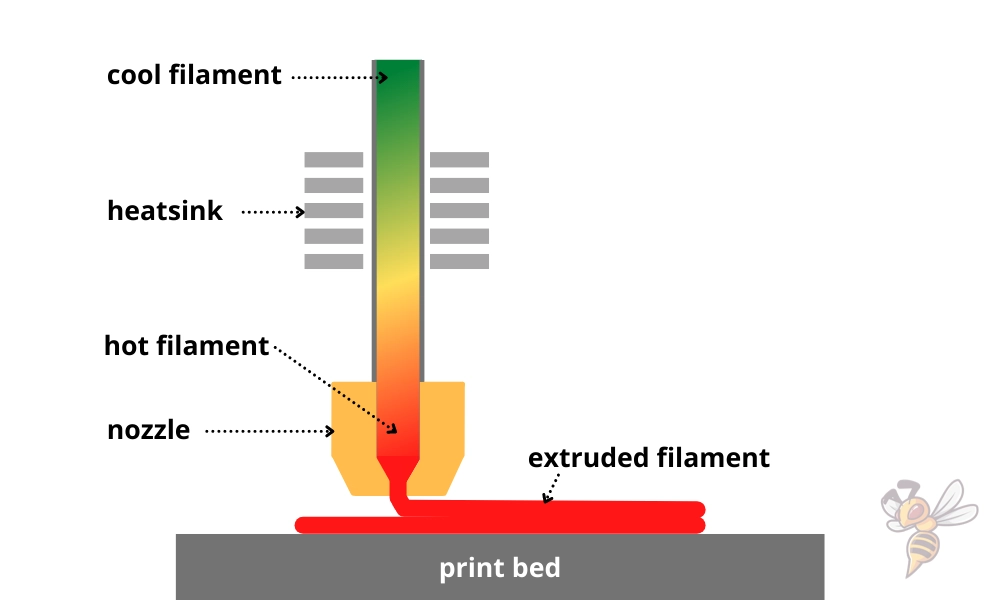
Fused Deposition Modeling (FDM) (or Fused Filament Fabrication (FFF)) works by extruding heated plastic through a small nozzle, layer by layer, to create a 3D object.
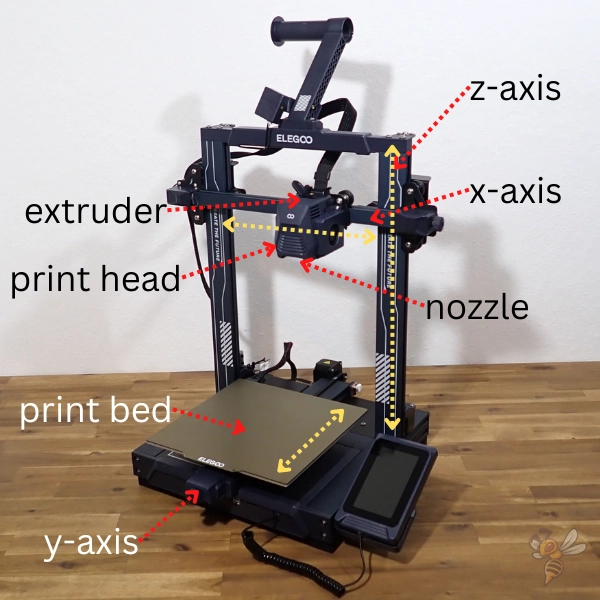
The plastic FDM filaments, fed from a spool, melt inside the printer’s extrusion head. As the melted material is deposited on the build platform, it cools and solidifies, bonding with the layer below. This process repeats, building the object from the bottom up.
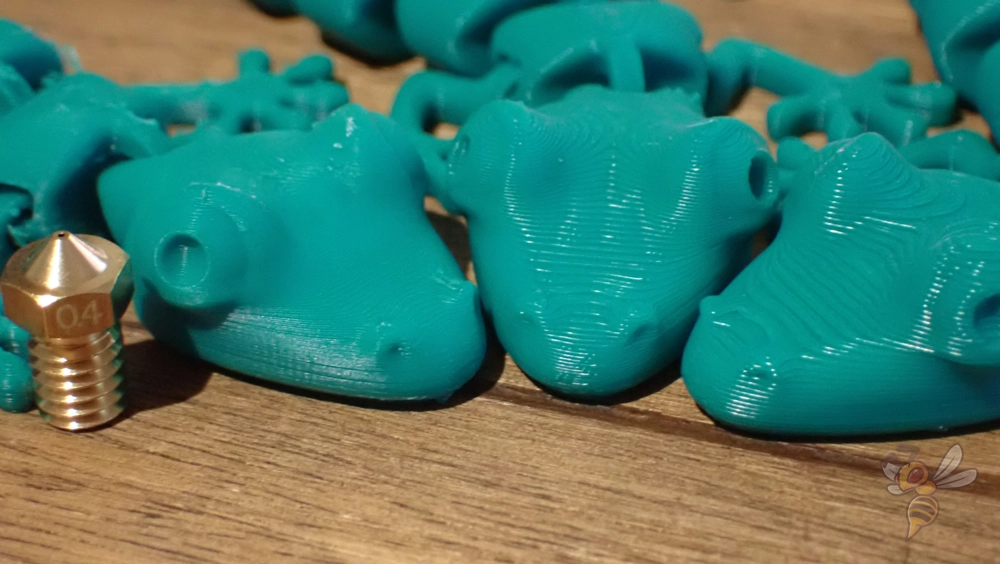
FDM can use various plastic types, allowing for a range of properties in the final product, such as flexibility, strength, and resistance to heat and chemicals. The most common filaments are PLA, ABS, PETG and TPU.
FDM printers are widely used for their simplicity, cost-effectiveness, and versatility in creating durable parts and prototypes.
Advantages of FDM
- Cost-Effective: Generally lower material and equipment costs.
- Material Durability: Uses strong, thermoplastic materials suitable for functional prototypes and other parts.
- Ease of Use: Straightforward process, making it accessible for beginners and hobbyists.
- Material Variety: Supports a wide range of FDM materials with different properties (e.g., flexible, durable, heat-resistant).
- Maintenance: Printers are typically easier to maintain compared to resin-based printers.
Disadvantages of FDM
- Lower Resolution: Cannot achieve the fine details that resin printers can, making it less suitable for intricate models.
- Visible Layer Lines: Printed objects often have visible layer lines, requiring post-processing for a smooth finish.
- Support Material: Overhangs and complex designs may require support structures that need to be manually removed.
- Limited to Thermoplastics: While there’s a variety of materials, they are generally limited to thermoplastics, which may not suit all applications.
- Warping and Shrinking: Materials may warp or shrink as they cool, potentially affecting the accuracy and appearance of the final object.
How 3D Printing with Resin Works
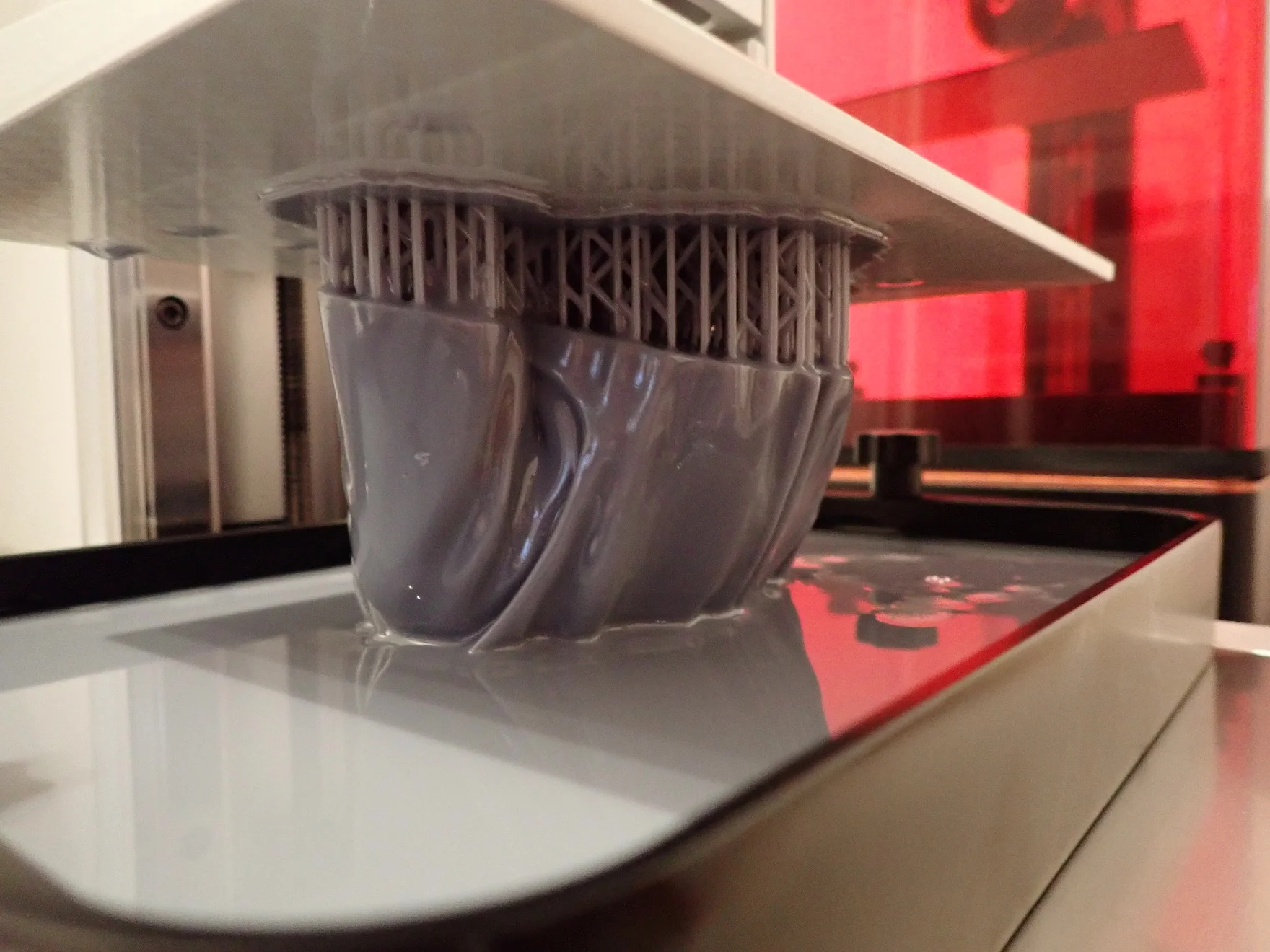
Stereolithography (SLA) is a type of resin 3D printing that transforms liquid resin into solid objects through a process called photopolymerization.
Here’s how it works: A laser beam precisely targets the surface of a liquid resin, hardening it layer by layer to form a 3D object. The build platform lifts the object out of the resin tank, allowing the laser to solidify the next layer until the entire object is complete.
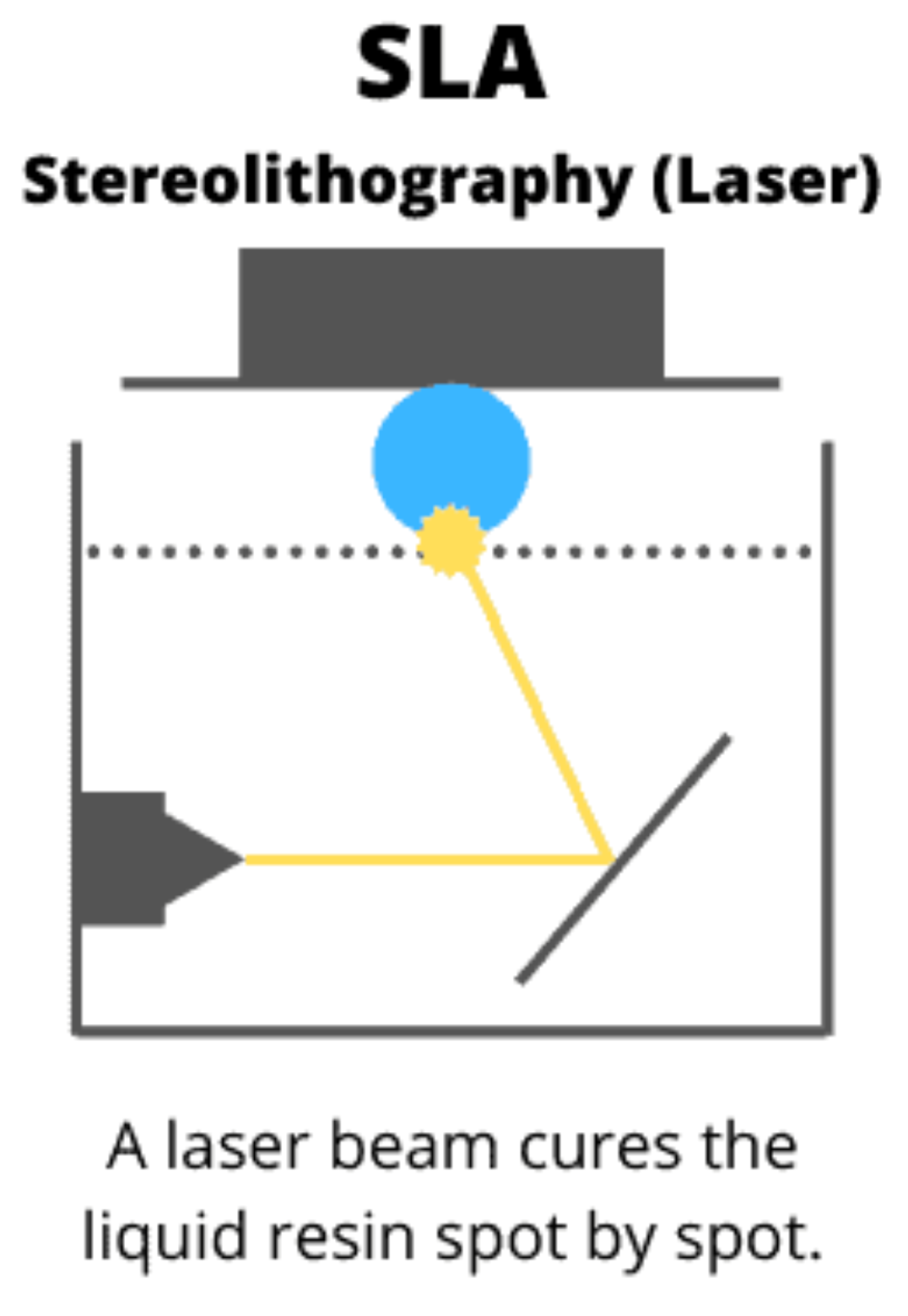
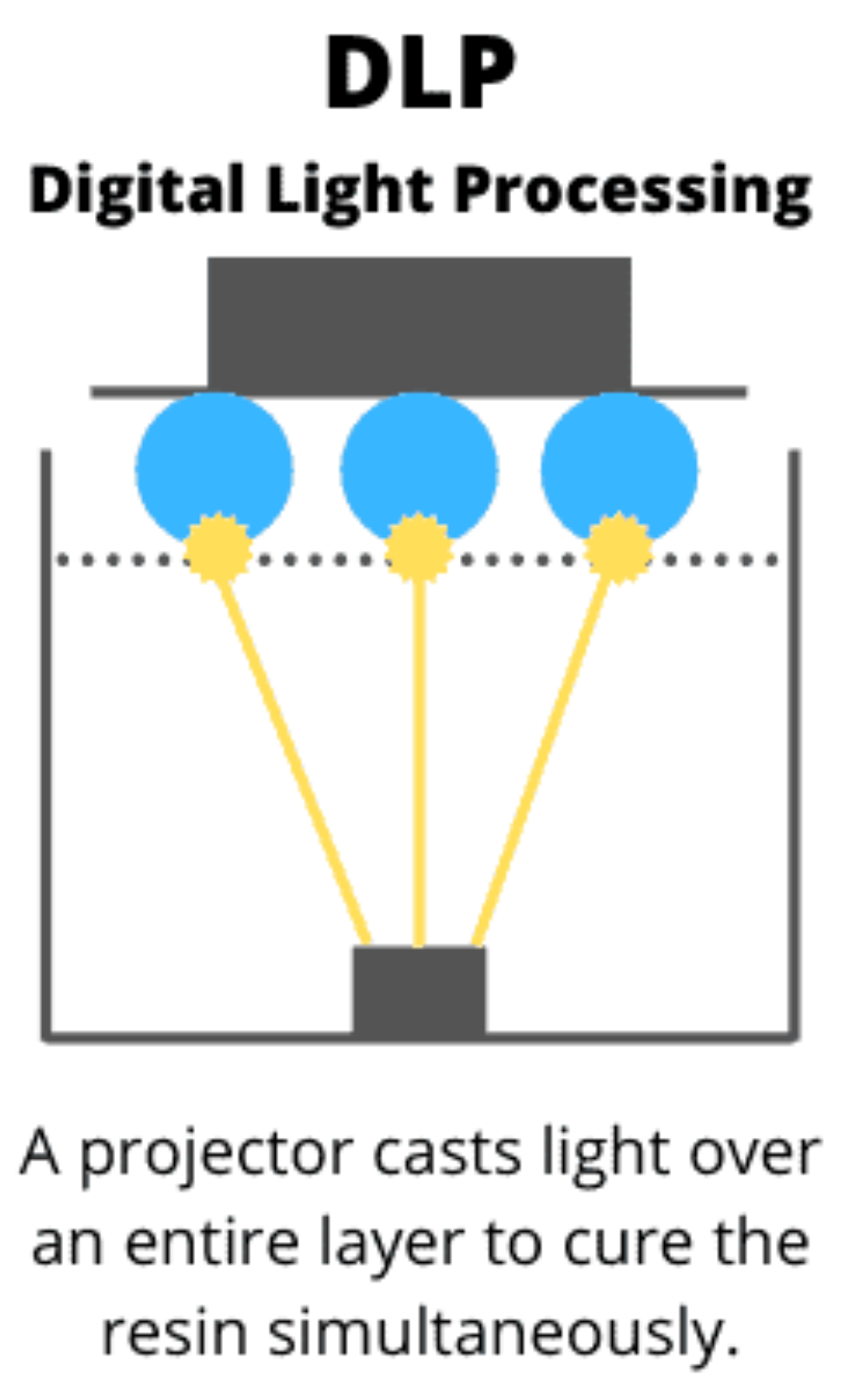
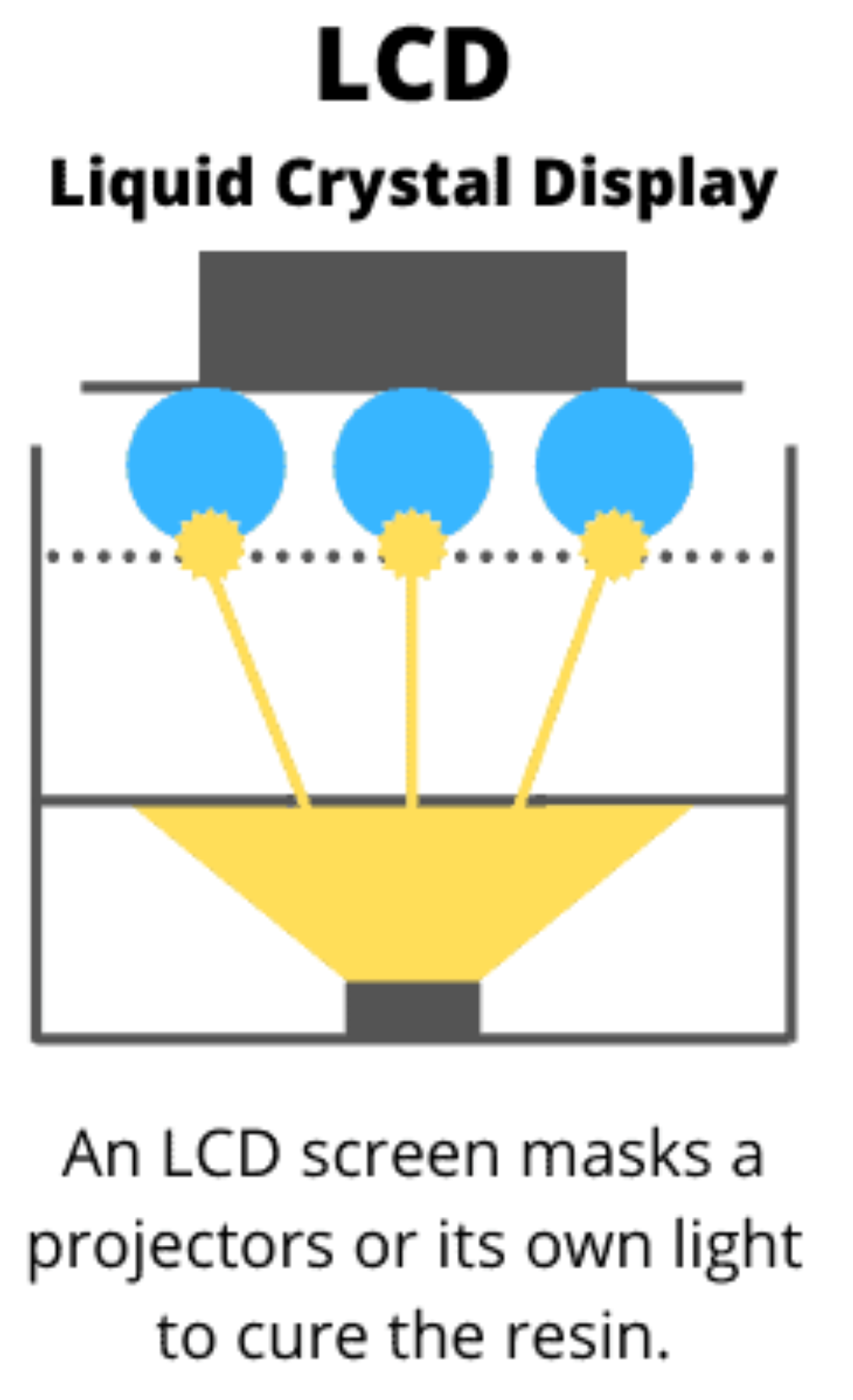
It’s important to note that while SLA printers are pioneers in resin 3D printing, there are other similar technologies such as Digital Light Processing (DLP) and Liquid Crystal Display (LCD) printing. DLP uses a digital projector screen to flash a single image of each layer all at once, making it faster than SLA in some cases.
LCD, on the other hand, uses an array of UV LEDs and a liquid crystal display to cure the resin. Both of these methods still rely on photopolymerization but differ in the UV light source and mechanics of layer formation.
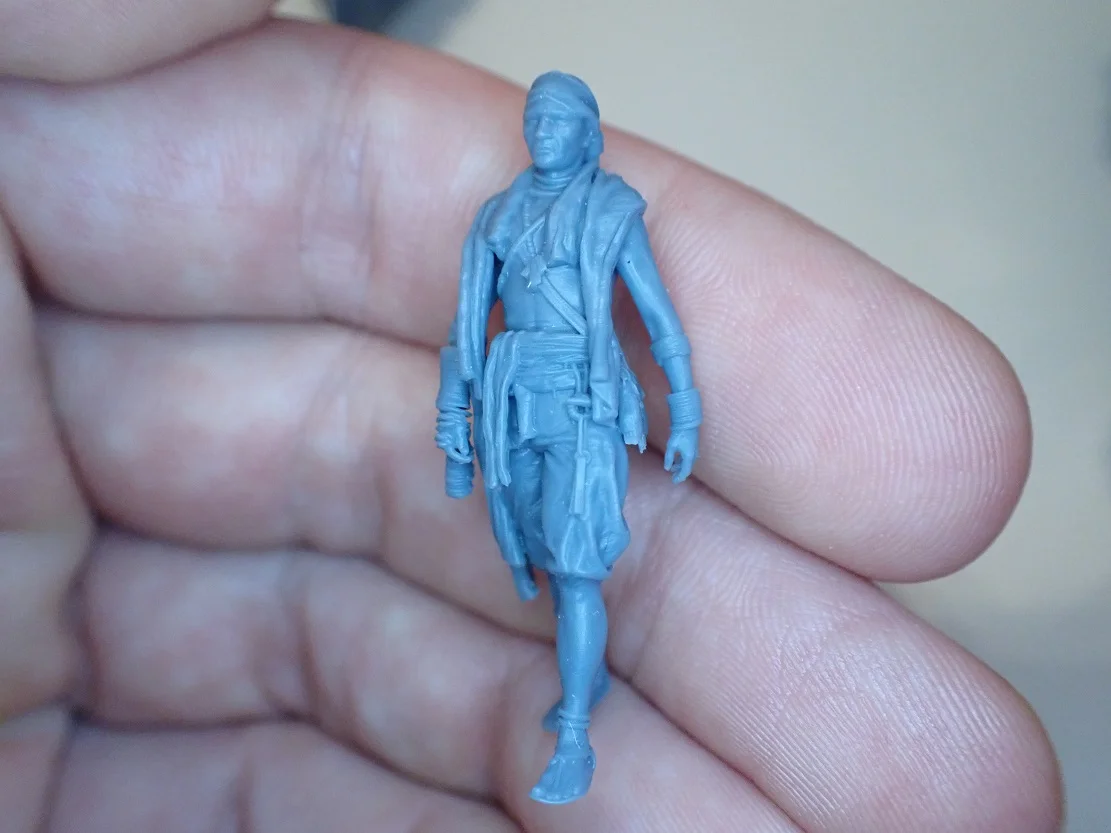
All these resin 3D printing technologies stand out for their ability to produce highly detailed and smooth objects with no or only minimal visible layer lines, making them ideal for applications requiring precision. Examples for that are jewelry, dental models, and intricate hobby projects.
Advantages of Resin 3D Printing
- High Detail: SLA printing achieves very fine features and smooth surfaces, ideal for intricate models.
- Precision: Excellent for applications requiring tight tolerances and detailed textures.
- Variety of SLA Materials: Offers a range of resins with different material properties (flexible, durable, high-temperature resistance).
- Fast Layer Curing: Technologies like DLP and LCD can cure entire layers at once, accelerating the printing process.
Disadvantages of Resin 3D Printing
- Cost: Generally higher material and equipment costs than FDM.
- Post-Processing: Requires cleaning and curing, which can be messy and time-consuming.
- Material Handling: Resins can be toxic and require careful handling and proper ventilation.
- Durability: Printed parts may be more brittle and less durable than those made with FDM.
- Limited Build Volume: Often has a smaller build volume compared to FDM printers, limiting the size of objects that can be printed.
Disclosure: This website is the property of Martin Lütkemeyer and is operated by Martin Lütkemeyer. Martin Lütkemeyer is a member of the Amazon Services LLC and other Affiliate Programs. These are affiliate advertising programs designed to enable websites to earn advertising revenue through advertising and linking to Amazon.com and others. Links marked with * are affiliate links.

